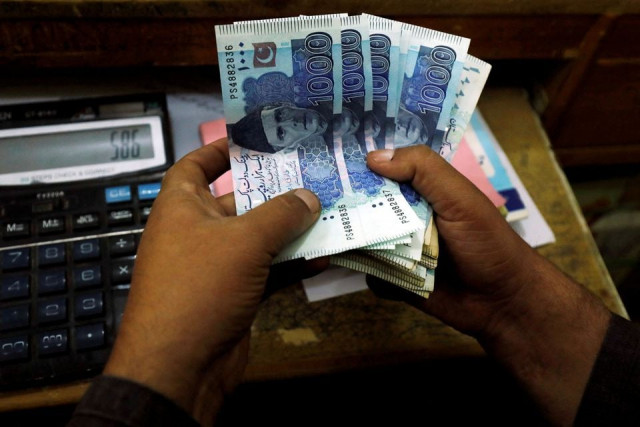Pakistani rupee beats Asian peers
Declared best performing currency in region as RDA inflows surge beyond $8b

The Pakistani rupee has emerged as the best performing currency in Asia after recording a notable appreciation against the US dollar over the past one year, as foreign currency inflows through the Roshan Digital Account (RDA) surpassed yet another historical threshold of $8 billion, which extended support to the currency.
The State Bank of Pakistan (SBP) reported on Friday that non-resident Pakistanis had sent over $8 billion through the RDA since the introduction of the scheme about 45 months ago in September 2020. The bank thanked the overseas Pakistanis for their unwavering support and trust.
The development suggests that the expatriates sent $169 million from May 1 to 24, 2024 which boosted gross inflows to more than $8 billion from $7.83 billion at the end of April 2024. The increase in RDA inflows came ahead of Eidul Azha in mid-June.
Overseas Pakistanis are sending higher remittances to support their family members and relatives back home, help them buy sacrificial animals and cope with the elevated inflation in the country. Net funds in the RDA, however, stood at only $1.32 billion in April, as the non-residents spent a big part of the funds (63% or $4.92 billion) on their relatives living in Pakistan and withdrew some of the invested money.
The prime objective of the introduction of RDA was to offer lucrative investment products to the overseas Pakistanis like the Naya Pakistan Certificates (NPC). The inflows under the RDA played a vital role in stabilising the country’s foreign exchange reserves at a 10-month high at $9.15 billion.
Rupee the best performer According to data compiled and reported by Topline Research, Pakistani currency has appreciated 3.1% in the past one year to Rs278.12/$ on the MSCI Asia Emerging and Frontier Markets Index.
The currency appreciation was partly achieved through inflows under the RDA, workers’ remittances and stable export earnings. New loans from multilateral creditors like the International Monetary Fund (IMF) and World Bank and the rollover of foreign loans also propped up the rupee against the greenback.
These inflows improved supply of foreign currencies against their demand in the domestic economy, lending support to the rupee. Pakistani currency was followed by the Sri Lankan currency which appreciated 2.7% in the past one year, while all other regional currencies in the index depreciated up to 5.6% including the Indian, Chinese, Vietnamese and Bangladeshi currencies.
Rupee overvalued While the Pakistani rupee has remained stable in the range of Rs278-278.50/$ over the last one month, financial experts are divided as to what is the fair value of the rupee. Ex-minister Ashfaq Tola said that the actual value of the currency was Rs235/$, which indicated that there was a big room for further appreciation of the rupee.
Many currency market dealers were of the view that the rupee would have appreciated to Rs240-250/$ had the central bank not absorbed surplus supply of the greenback. However, the purchase of surplus dollars played a key role in maintaining the foreign currency reserves and allowed the country to repay the maturing foreign debt on time.
The central bank has so far bought $6 billion from currency markets amid government’s control over imports. Had imports not been restricted, the demand for the greenback would have risen, wiped out the foreign exchange reserves and increased the risk of default on debt repayment.
Another section of experts including treasury firm Tresmark believe the rupee stands “overvalued” at present as the authorities concerned are not allowing imports to grow to their true potential. The firm argued in a commentary on Saturday that Pakistan was running an outdated economic model of controlling imports.
The measure is compromising economic activities in the country. It argued that the low growth in reserves was the result of low productivity in the economy (including the export-oriented one) and the low reserves are keeping growth at the lower side.
Tresmark anticipated a depreciation of Rs2-3 per month from July onwards. The IMF has also assumed that the domestic currency will depreciate to Rs329/$ over the next 13 months – by the end of June 2025.
A financial expert, who talked on condition of anonymity, said Pakistan was paying a higher price (significantly higher profit margins on Naya Pakistan Certificates) for attracting RDA inflows.
“This is damaging the economy.” Secondly, he said, the foreign direct investment (FDI) number was seen inflated at a four-year high in April.



















COMMENTS
Comments are moderated and generally will be posted if they are on-topic and not abusive.
For more information, please see our Comments FAQ